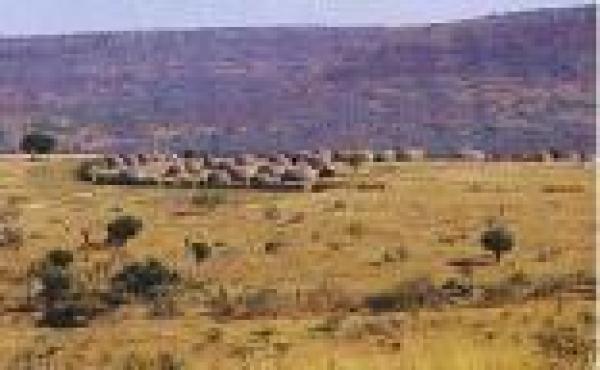Umgungundlovu, situated just south of the White Umfolozi River in northern Natal and once the royal capital of Dingane, offers a fascinating glimpse into the mind of this Zulu king.
The process by which the royal capital of Dingane is being raised, quite literally, from its ashes, is fascinating. Guides are on hand to fill in the gaps left by time, and if you visit the museum during winter, you will find archaeologists at work, sifting the terrain for clues to information not found in history books.
A tour of Umgungundlovu will take you past completed huts, thus providing you with an opportunity to study both hut-building techniques and the social life of the Zulu.
Finally, your walk will culminate at the grave of Voortrekker leader Piet Retief, whose death here was a significant and controversial chapter in the history of the country.
Dingane was a notable character, charming, intelligent, shrewd and artistic. He was tall and muscular and obsessed with personal cleanliness. He had a sense of grandeur and a style unique among rulers of the day. He spent most of his time in the isigodlo (royal area) being entertained by his mistresses with song and dance.
Their dress, for different occasions, he designed himself and many of the songs were composed by him. They soon discovered, as the Trekkers did, that they had traded a tyrant for a man of many moods, who could be treacherous and cruel.
Umgungundlovu was established in 1829 and finally burnt down on the order of Dingane soon after the Battle of Blood River. Its name is derived from the Zulu phrase "ungungu we ndlovu", which means 'the secret conclave of the elephant'. Its function was that of military settlement and Dingane's royal capital.
More or less oval in shape, it consisted of some 1700 huts that could house up to 7 000 residents. Standing six to eight deep, the huts formed a huge circle around an open arena known as the large cattle kraal, a space also used for military parades and gatherings.
The circle of huts was enclosed both inside and out by a strong palisade. From the main entrance on the northern side, the huts of the warriors stretched around the circle to the royal enclosure directly opposite and about 600 m distant.
The king, his mistresses and female attendants resided here. Dingane never officially married, but surrounded himself with at least 500 women who were divided into two groups. The white isogodlo was the largest group and consisted mainly of girls presented to the king by his important subjects.
The black isogodlo comprised about 100 privileged women selected at the annual umkhosi ('rites of the first fruits') and included the Bheje - a smaller group favoured by the king as his mistresses, some of whom lived in a small, private settlement behind the main complex.
The huts of the black isogodlo were divided into compartments, and within one of these stood the king's private hut. Archaeological excavations have revealed that this hut, with a diameter of approximately 10 m, was probably the largest hut ever built in the traditional Zulu manner. It was supported by 22 posts entirely covered in glass beads, of which the molten remains have been recovered.
Coppersmithing appears to have thrived at Mgungundlovu and the remains of crucible shards, slag and spilt copper found at Kwambecini west of the main complex suggest that this was the coppersmithing site.
Oral tradition claims that Kwa-Nkata, just outside the complex near the main entrance, was Dingane's execution ground, but historians believe it was located on a ridge northeast of the settlement known as Kwamatiwane.
This is where the skeletal remains of the murdered Voortrekkers were found, and the controversial land treaty reputedly retrieved from a leather bag near the remains of Retief.
Visitors to the Umgungundlovu Museum (formerly known as Dingane's Kraal) have to be accompanied by an official guide.

